Destabilization plans, invasion of air and sea space, surveillance of Colombian and Venezuelan politicians and officials of the Embassy of the neighboring country. RAYA magazine had access to another hundred documents in which it is revealed that Colombian spies even entered the Venezuelan consulate in Cartagena to steal documents.
By: Edinson Bolaños Espionaje internacional: Objetivo Venezuela
The espionage and destabilization operation against the Venezuelan state was called the “Genesis” project and the hypothesis of war against Venezuela “Blanco Z2”. Colombian intelligence agencies carried out espionage without a court order and against the national intelligence law, thus creating a Cold War scenario between the two countries.
The infiltration, espionage and smear plans carried out against the diplomatic corps and the Venezuelan government are just the tip of the iceberg of the entire plot that was woven against Venezuela from abroad by the governments of Iván Duque and Donald Trump.
Duke and Trump revived the Cold War
The Colombian intelligence agency had 28 sources within the Venezuelan state forces. From a Brigadier General of the Mérida state who was oriented to achieve more cooperating objectives within the uniformed. This network of informants was made up of colonels, lieutenants, ship lieutenants, frigate lieutenants, sergeants, corporals, officers of the Bolivarian Navy, members of the Police and members of the Bolivarian Militias.
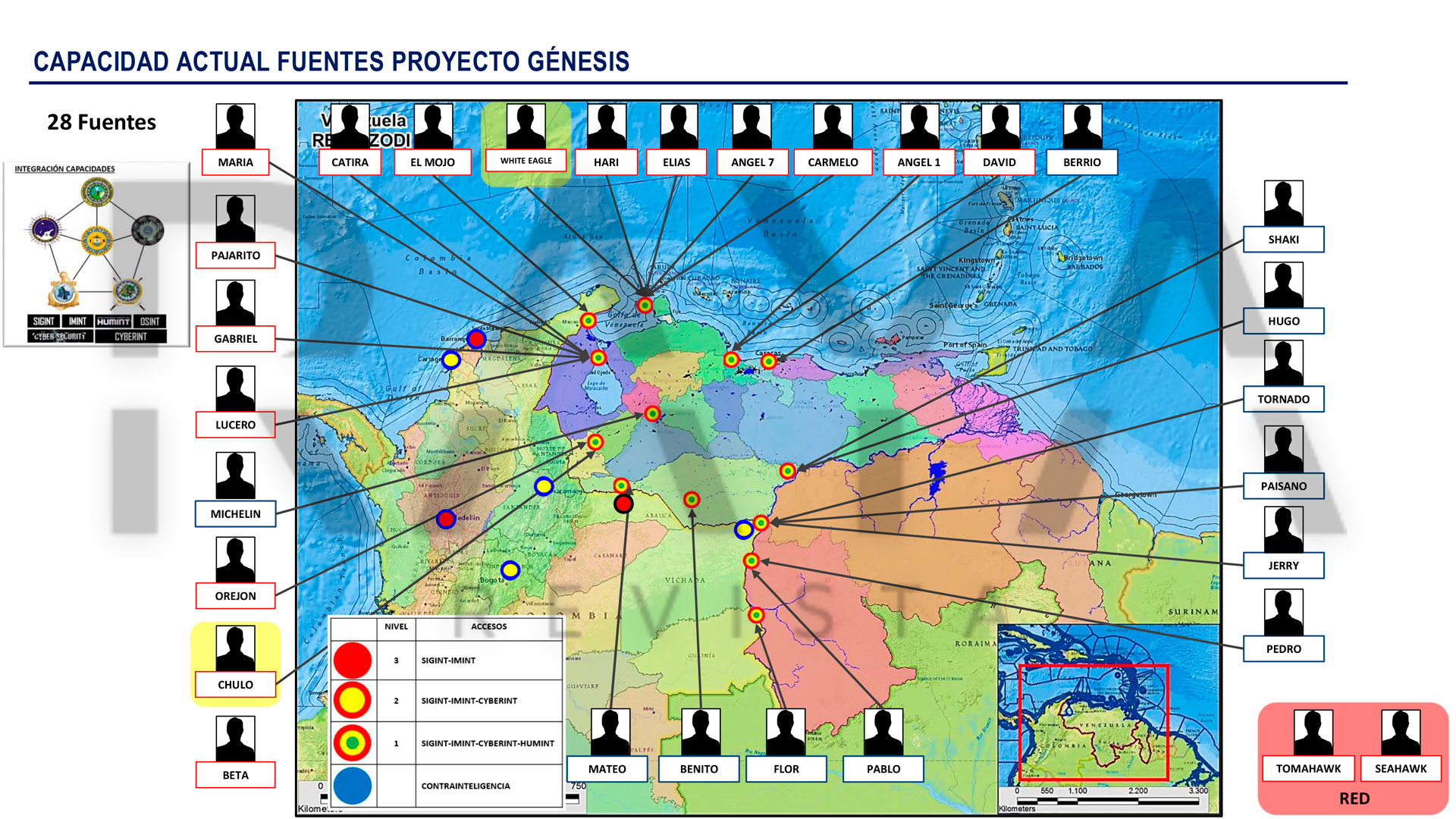
They extracted the most intimate details of the neighboring country, such as the state of the Aerospace Defense System and the instruction and training plans, in the event of a military uprising by the Bolivarian National Armed Forces (FANB) or in the event of a military invasion by the United States, which was not ruled out according to Colombian military intelligence documents.
The level of military infiltration that Colombia had in Venezuela was such that they managed to access the main exercises and maneuvers carried out in different regions of that country. One of the reports in the “Genesis” folders of February 10, 2019 warns, for example, the exact location of military maneuvers 30 minutes from Caracas: “The Amphibious Landing Ship T61 “Capana”, is docked in the La Guaira Coast Guard Main Station (EPGLG)”.
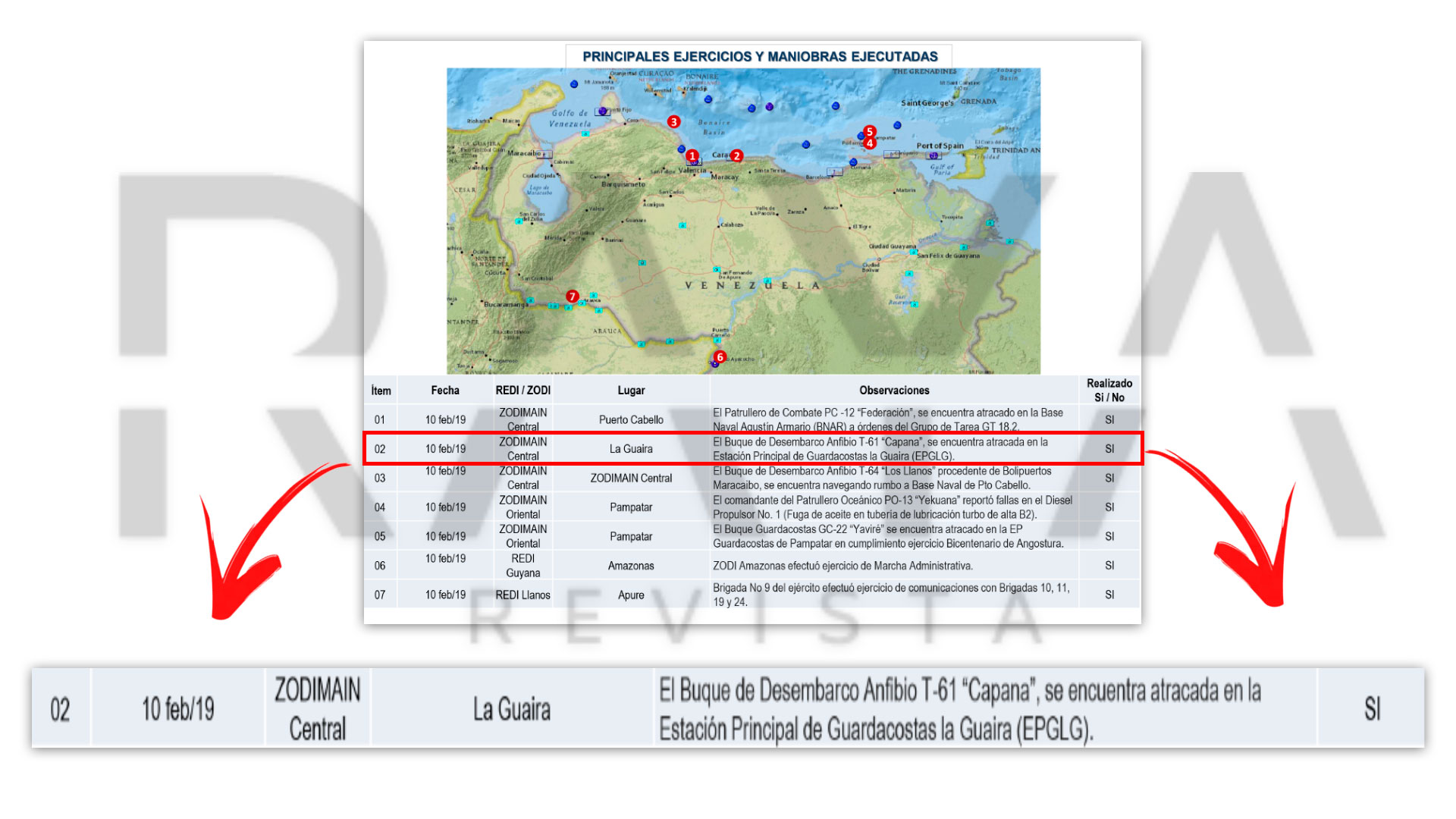
Through one of these sources, the Colombian spies also had access to an internal document sent by Major General Juan Manuel Texeira Dias, commander of the Comprehensive Aerospace Defense, to the director general of Arms and Explosives, Jesús Antonio Carrera Mora. In it, Texeira requested “the assignment of 25 portable anti-aircraft missiles named I-GLAS, to the Special Brigade for Presidential Protection and Assurance to be used in the protection of citizen Nicolas Maduro Moros, president of Venezuela and commander of the Armed Forces. Bolivarian National (FANB) ”, says the official letter of March 1, 2019.
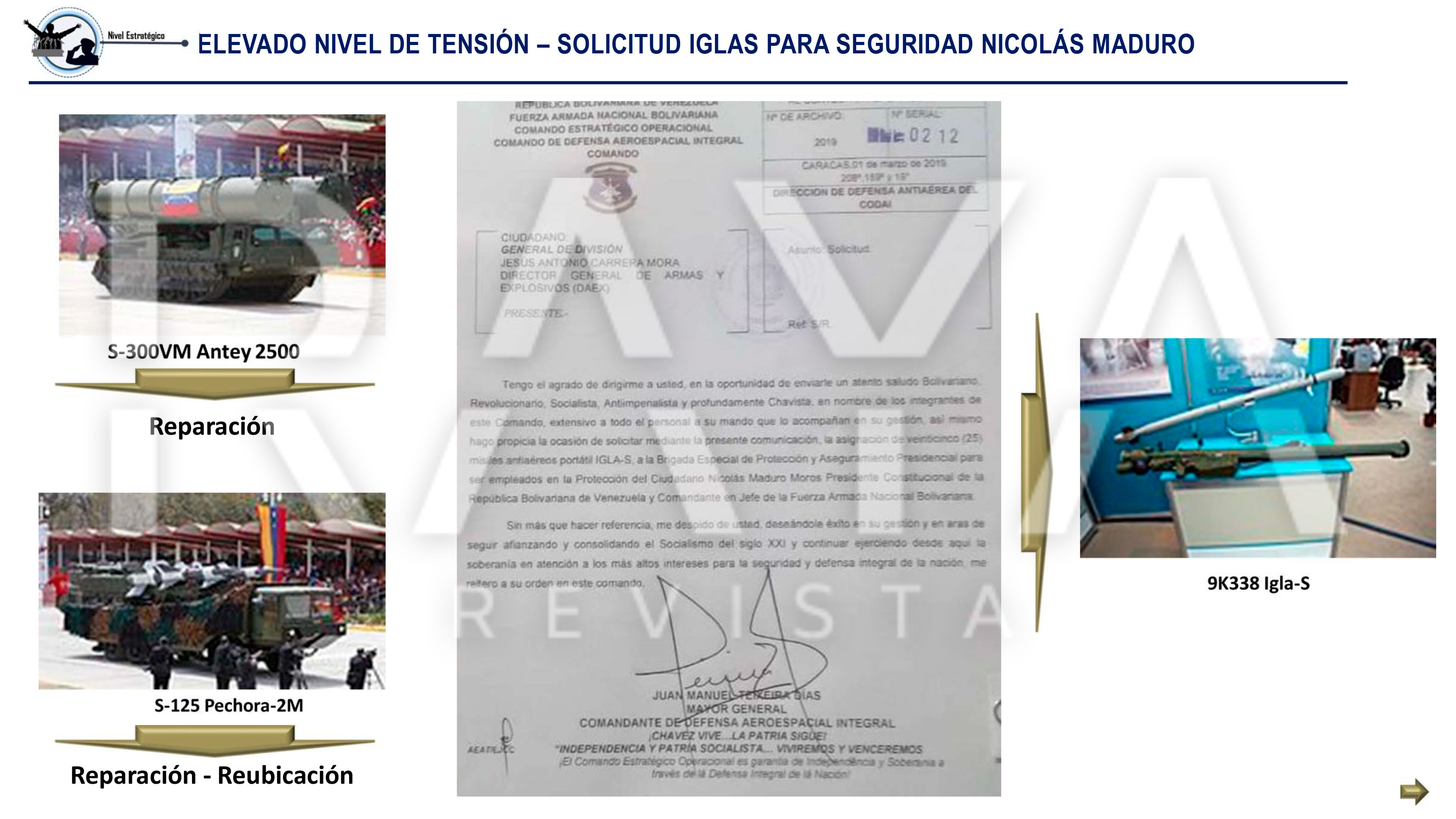
In April of that same year, FANB sources sent a message from Caracas to Colombian intelligence about the state of the generals and the troops facing the possibility of a military coup. This is how the Colombian spies recorded it in their reports: “In relation to Juan Guaidó, within the Armed Forces, even high-ranking officers think that many have not dared to take the step, because they have not seen a decisive action on the part of Juan Guaidó, who has limited himself to giving dates where nothing happens, so before being imprisoned for taking an action that leads to nothing, they prefer not to act”, says the report and adds: “if a decisive action about 6 out of 10 generals would support it, this taking into account that there are more dissatisfied than satisfied,
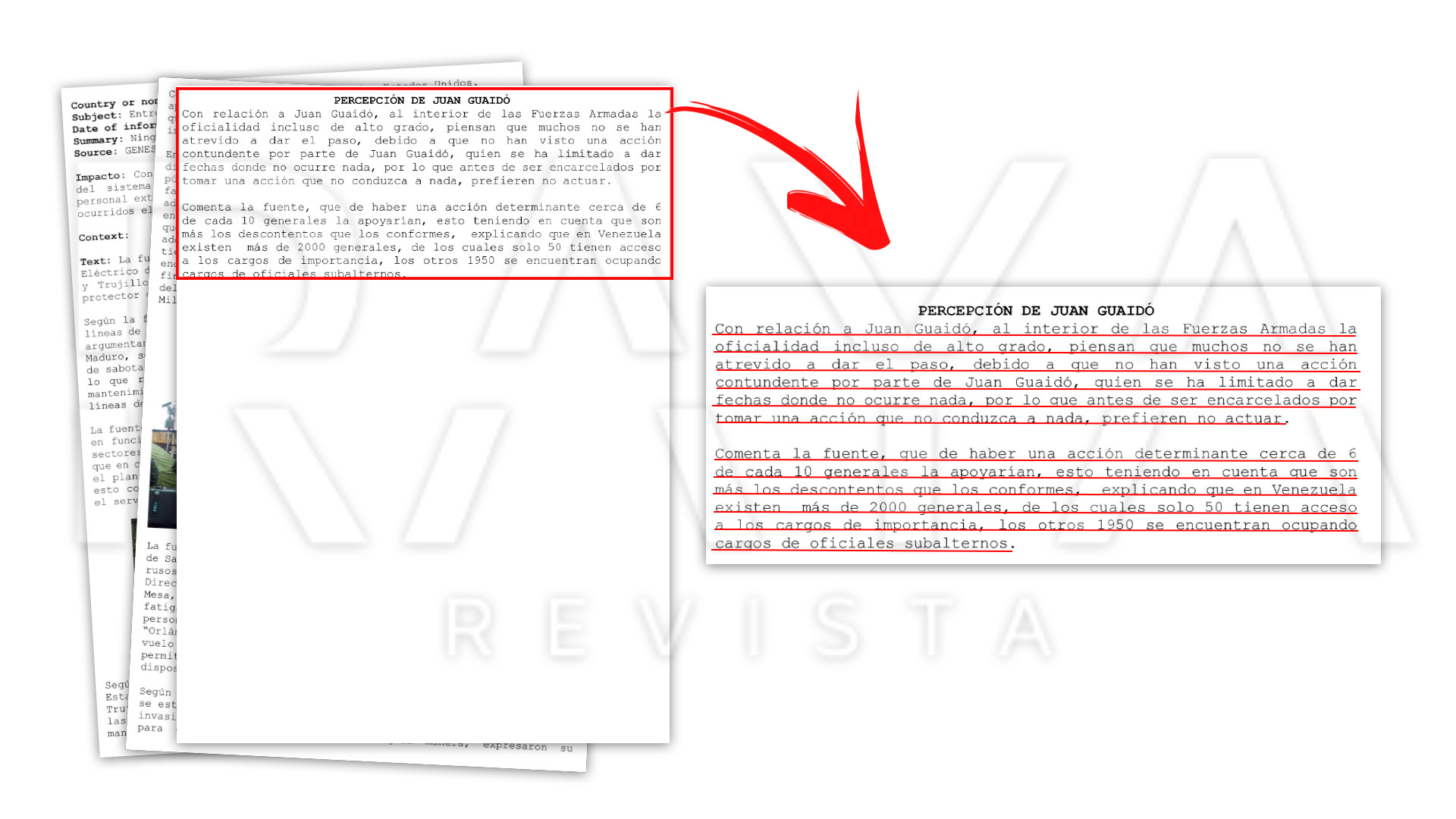
In April 2019, Colombian intelligence also accessed several photos taken by their source inside the Venezuelan Armed Forces. With them, the spies reported the presence of Russian soldiers in Venezuelan territory. This was recorded in his report: “Using FANB exclusive garments, they are training Venezuelan soldiers in the use of the Orlán-10E multipurpose UAV, to strengthen aerospace intelligence capabilities.


The Colombian agents had unexpected scope and profiled politicians based in Caracas. They had technical sources with access to privileged information from the United Socialist Party of Venezuela (PSUV) through which they managed to profile, for example, Jimmy Ángel Gudiño, a militant of the PSUV, a councilor for the Caracas Metropolitan Council and a member of the Bolivarian national militia. The Colombian agents described him as the person in charge of organizing the marches “in support of the Nicolas Maduro regime” and promoter in social networks of the dissemination of the “Communal Revolutionary as the basis of the Bolivarian Revolution” thought, reads the intelligence document of May 2019.
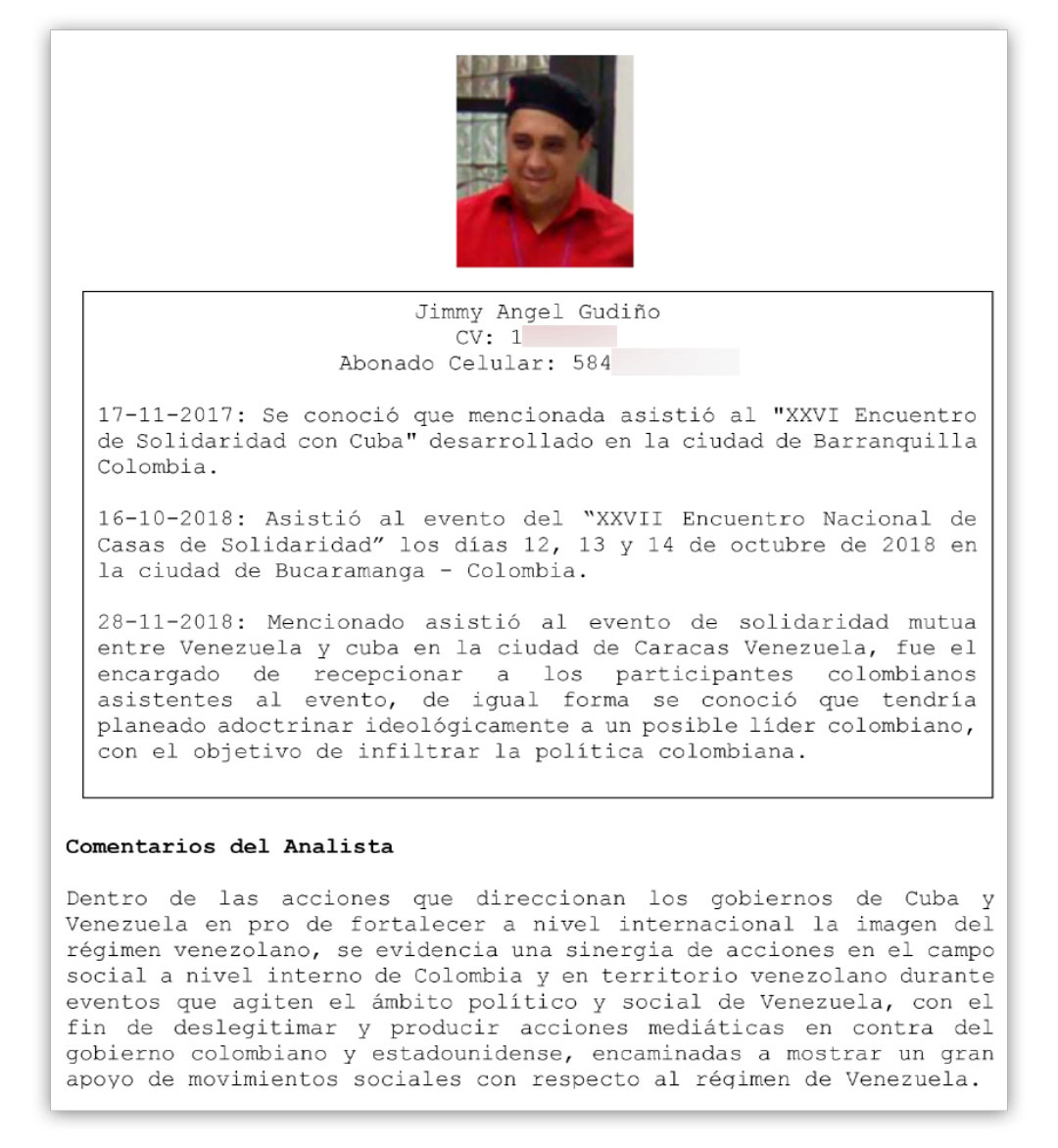
Trump’s provocation
On May 10, 2019, the Bolivarian Navy issued an alert to the Venezuelan military high command due to the detection north of La Guaira of the ship USS CG JAMES, belonging to the United States Coast Guard service, near Venezuelan territorial waters. After the event, the Venezuelan ocean patrol vessel PO-13 Yekuana set sail from the port of La Guaira with the mission of carrying out interdiction, proclamation, escort and identification of intentions of the USS GC James. “They had no instructions to carry out hostile actions, only dissuasive actions and any change in order had to come from the FANB’s Strategic Operational Command,” says the Colombian intelligence report. The Kariña ocean patrol vessel also set sail from Isla Margarita with the aim of supporting Yekuana.
However, the source confirmed to the Colombian spies that this would only happen if the ship James crossed the 12-mile limit “considered by international maritime law as a territorial sea.” The Yekuana and Kariña ships were each armed with a 76-millimeter cannon at the bow with a range of 10 kilometers. “Making a call by maritime radio, answering in Spanish that he was conducting patrols in international waters and law enforcement operations at sea, for which it was reported that he was not authorized and that he was sailing in maritime spaces of the Bolivarian Republic of Venezuela. , inviting him to leave jurisdictional waters, but there was no response to the message”.
Four days later, the exploration systems of the Venezuelan Integral Aerospace Defense detected the presence of an EP-3 plane from the United States. According to what one of the sources told Colombian intelligence, “the aircraft entered without making a report with the Venezuelan air traffic agencies, for which it was considered an operational risk for the movement of aircraft under the responsibility of the Maiquetía Control Center. Faced with this situation, the alert was activated and the order was given for the FANB Fighter aircraft to take off towards the north of Los Roques Island, carrying out a Combat Air Patrol with the intention of accompanying and visually identifying the EP- 3″. Said aircraft, upon detecting the presence of the FANB fighter planes, left the Maiquetía airspace and returned to its base of origin in Guantánamo. About 24 overflights of these characteristics were detected by Venezuelan radars in 2019.
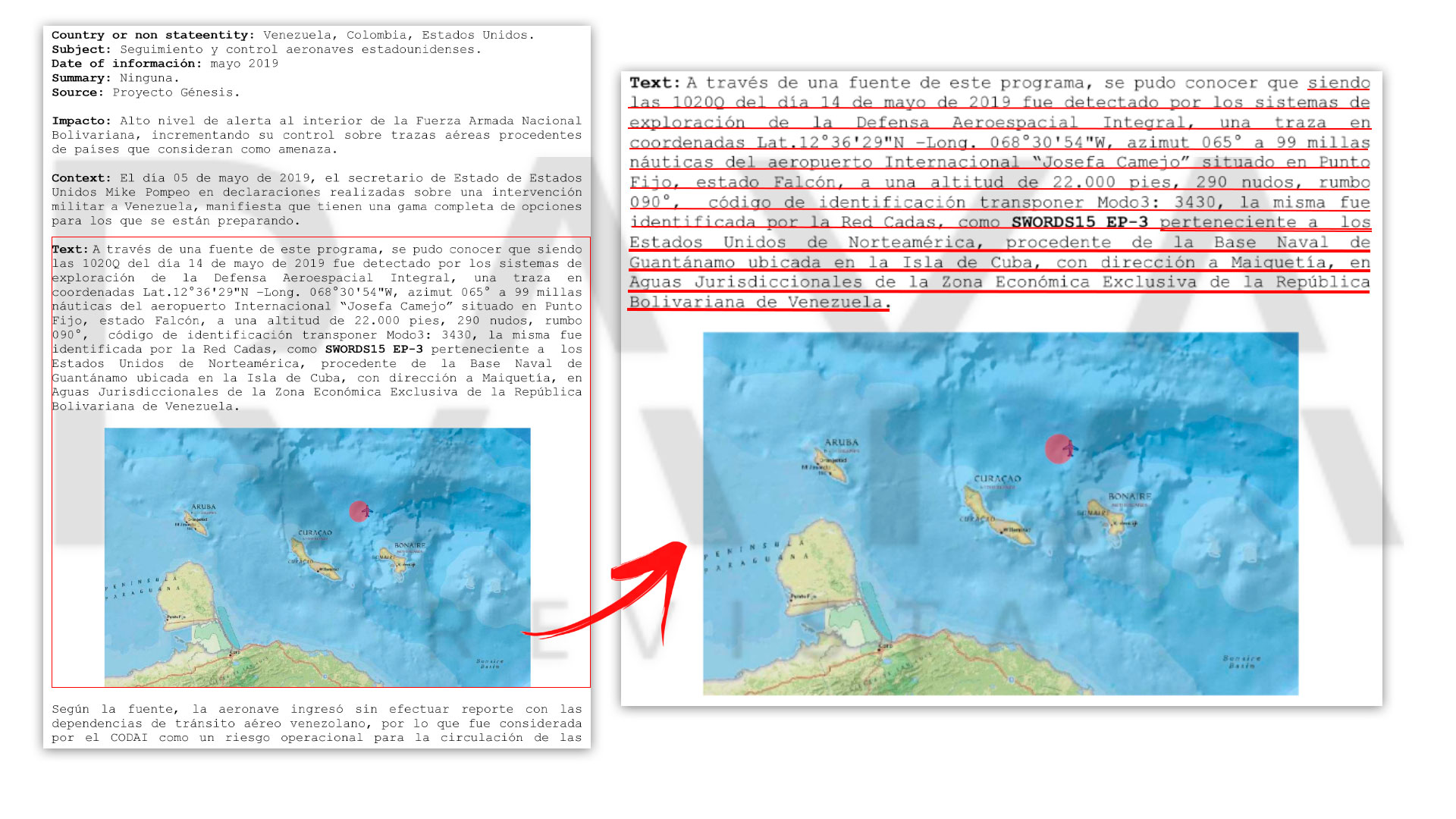
Colombian intelligence also accessed military communication codes and, on June 19, 2019, through what they called Operation “Revenge”, Colombian spies set out to access the server of the Ministry of Popular Power for Defense. By then, they managed to access and scan the e-mail of that ministry and planned to penetrate the mail of three military commanders: the head of Logistics for the Aerospace Defense of Venezuela, Carlos Antonio Seijas García; the commander of the Comprehensive Aerospace Defense, Juan Manuel Teixeira Dias and the director of the Bolivarian Military Aviation, José Luis Tremont Jiménez.
Infiltration Ministry of Defense Venezuela
Another of the destabilization plans was carried out in the state of Apure with the aim of “influencing the Bolivarian Army to carry out military operations against the ELN.” For this purpose, the Colombian spies set out to prepare apocryphal ELN pamphlets and audios ordering “account settling” against the Venezuelan Armed Forces. The intelligence document also adds a photo of an original ELN pamphlet from 2015 which would be taken as an example to elaborate the fictitious one.


A Scapegoat
One of the first documents with which this espionage operation begins makes it clear that a human source pointed out Carlos Manuel Pino, press attaché at the Venezuelan embassy, as a high-value target for allegedly being a member of the Bolivarian Service. of Intelligence (SEBIN).
This human source was the one who took the photographs of the interior of the Cuban Embassy revealed in the first edition of RAYA magazine, and in this case he did the same job in the Venezuelan Embassy, always under the façade of a photojournalist with whom he has since Since 2010, he had been collaborating with the now-defunct Administrative Department of Security (DAS). His name within the operation was “Nicolás”, but within the documents of the espionage to Venezuela they registered him as Gabriel Antonio Cruz, journalist and photographer of the newspaper Mundo Diplomático, a specialized and little-known media.
Espionage inside the Venezuelan embassy
Espionage inside the Venezuelan embassy
Espionage inside the Venezuelan embassy
Espionage inside the Venezuelan embassy
The information provided by “Nicolás” was the basis for generating the first order to penetrate Pino’s computer system without a court order. From there, the Colombian spies activated an entire espionage network around his daily life and that of his wife, the left-wing politician Gloria Flórez, even to the point of profiling his minor son. For four years they were all targets of persecution, infiltrations and illegal interceptions.
By February 2017, Carlos Pino was already fully infiltrated. The Colombian spies had in their folders all the details of his place of residence in the La Soledad neighborhood, in the center of Bogotá.
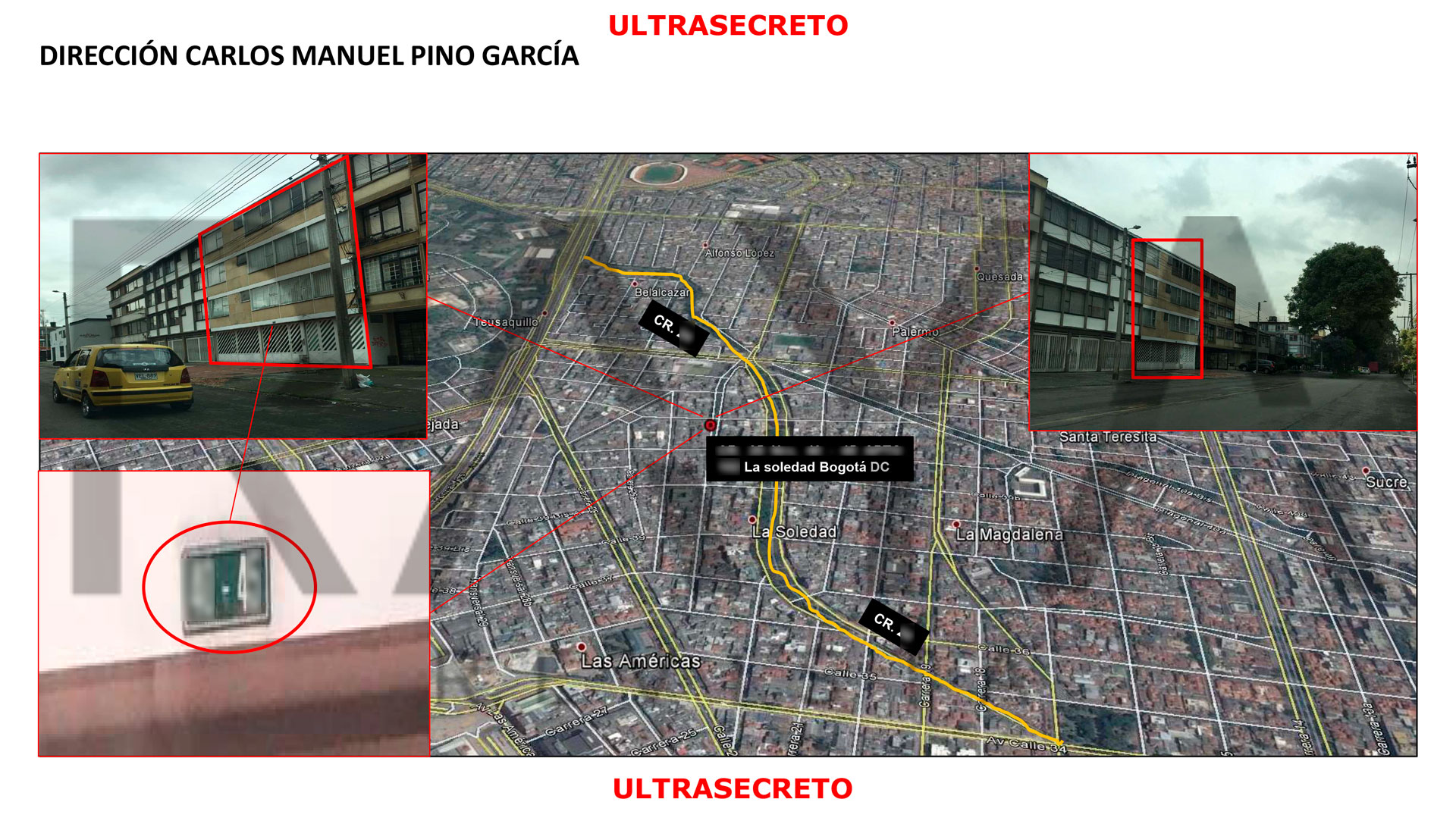
“Nicolás”, in his role as photographer, sought him out several times to surreptitiously record him while asking his opinion on political news and offering to sell him cell phones. In the five recorded conversations held by this magazine, the conversations do not provide evidence that implicates Pino in espionage activities. In that same month, the Colombian spies already had in their possession a complete copy of what Pino’s cell phone contained: photographs of his family gatherings in which his mother-in-law, his wife Gloria Flórez, his son and the relatives of today appear. senator. There is also no evidence of what he has been accused of.
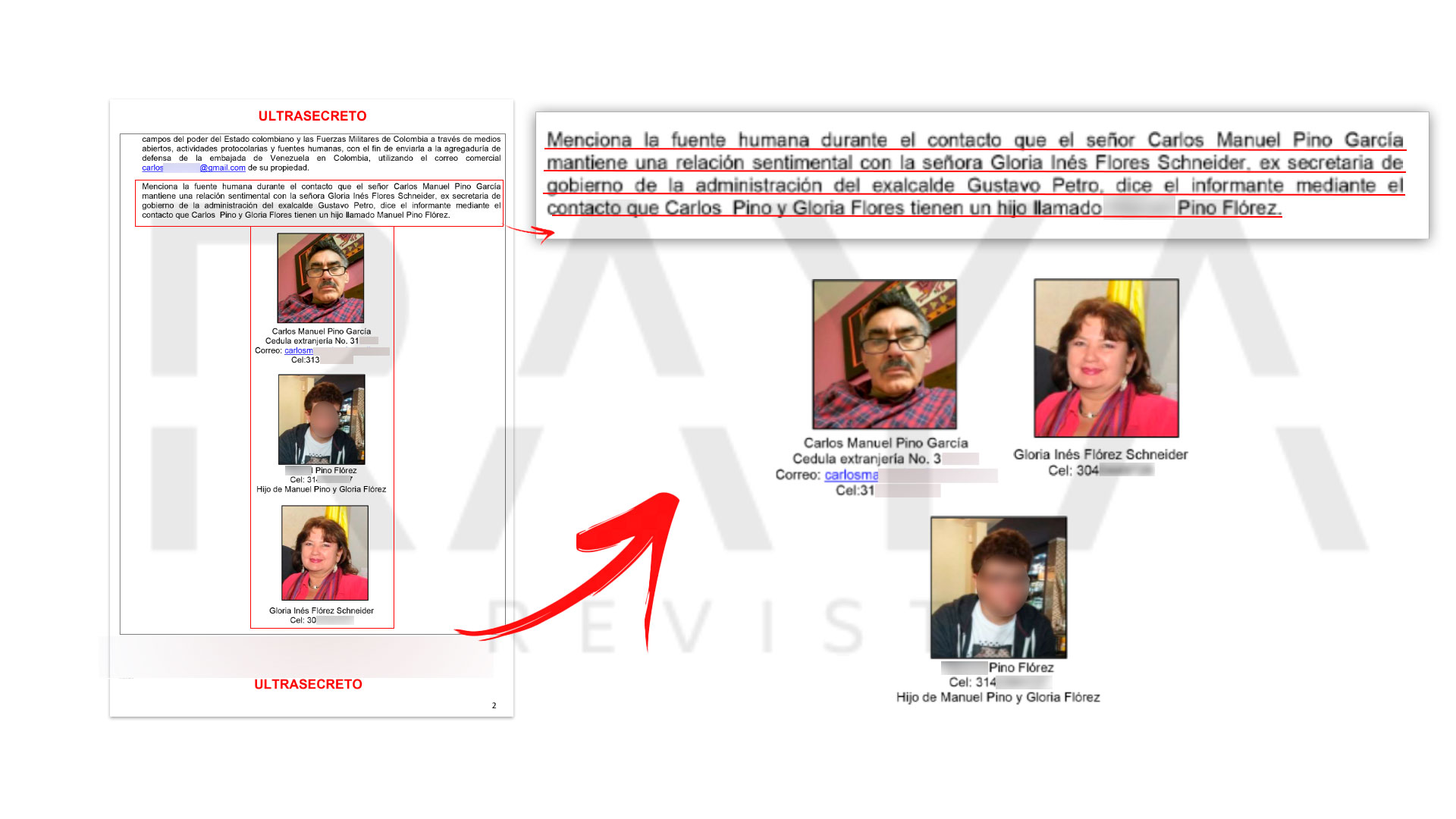
Several of these photographs were later used by Colombian spies to review the political contacts of today’s congresswoman Flórez, among which Senator Iván Cepeda, political leader Jaime Dussán and Senator Piedad Córdoba stand out. All included within the organization charts in which Colombian intelligence related them to a supposed transnational network that intended to destabilize Colombia. However, the evidence to which this magazine had access did not reveal that this was true either.
Profiling Gloria Flórez, Iván Cepeda and Jaime Dussan
During 2017, the monitoring and profiling intensified as a result of the protests in Bogotá by the Venezuelan opposition against the government of Nicolás Maduro, which were held in front of the Venezuelan and Cuban embassies. On these occasions Carlos Pino, Gloria Flórez, her son and other Cuban and Venezuelan officials and diplomats responded with harangues and banners in favor of these two countries. Intelligence documents describe these actions as acts of espionage against the opposition.
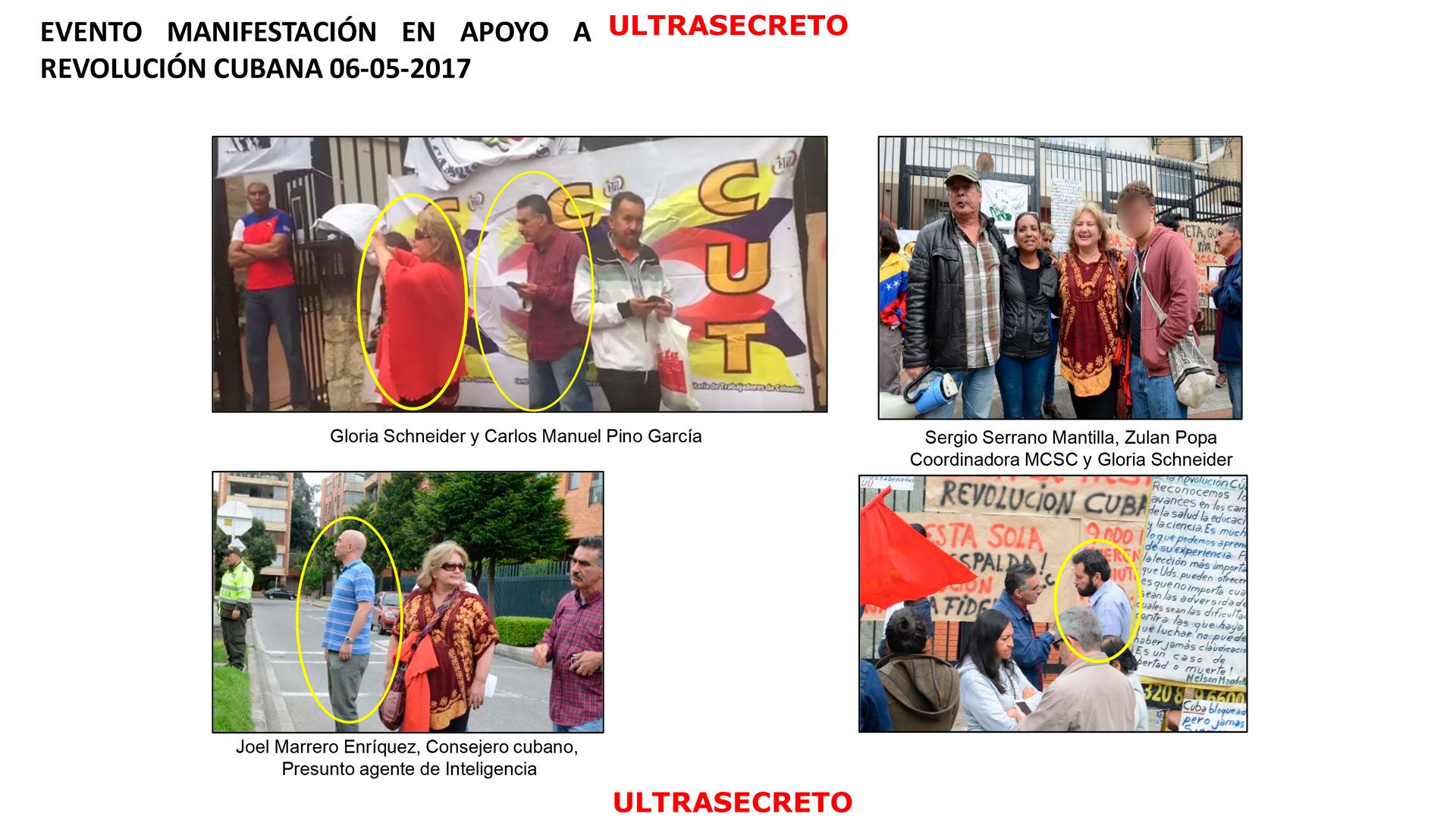
On August 2, 2018, five days before the inauguration of Iván Duque as president, a sector of the Venezuelan opposition taking refuge in Bogotá, which included prosecutor Luisa Ortega and the Supreme Court of Justice of Venezuela in exile, made a public event in the Colombian Congress to make a trial for corruption against President Maduro. This event was used by “Nicolás” to take photographs and videos that he sent to Pino to his cell phone from where they were extracted by Colombian spies to continue insisting that Pino was persecuting and photographing the Venezuelan opposition in Bogotá. Four months later these photos were exposed in documents and internal presentations of Colombian intelligence and Migration Colombia to justify the expulsion of the diplomat from the country on Thursday, December 20, 2018.
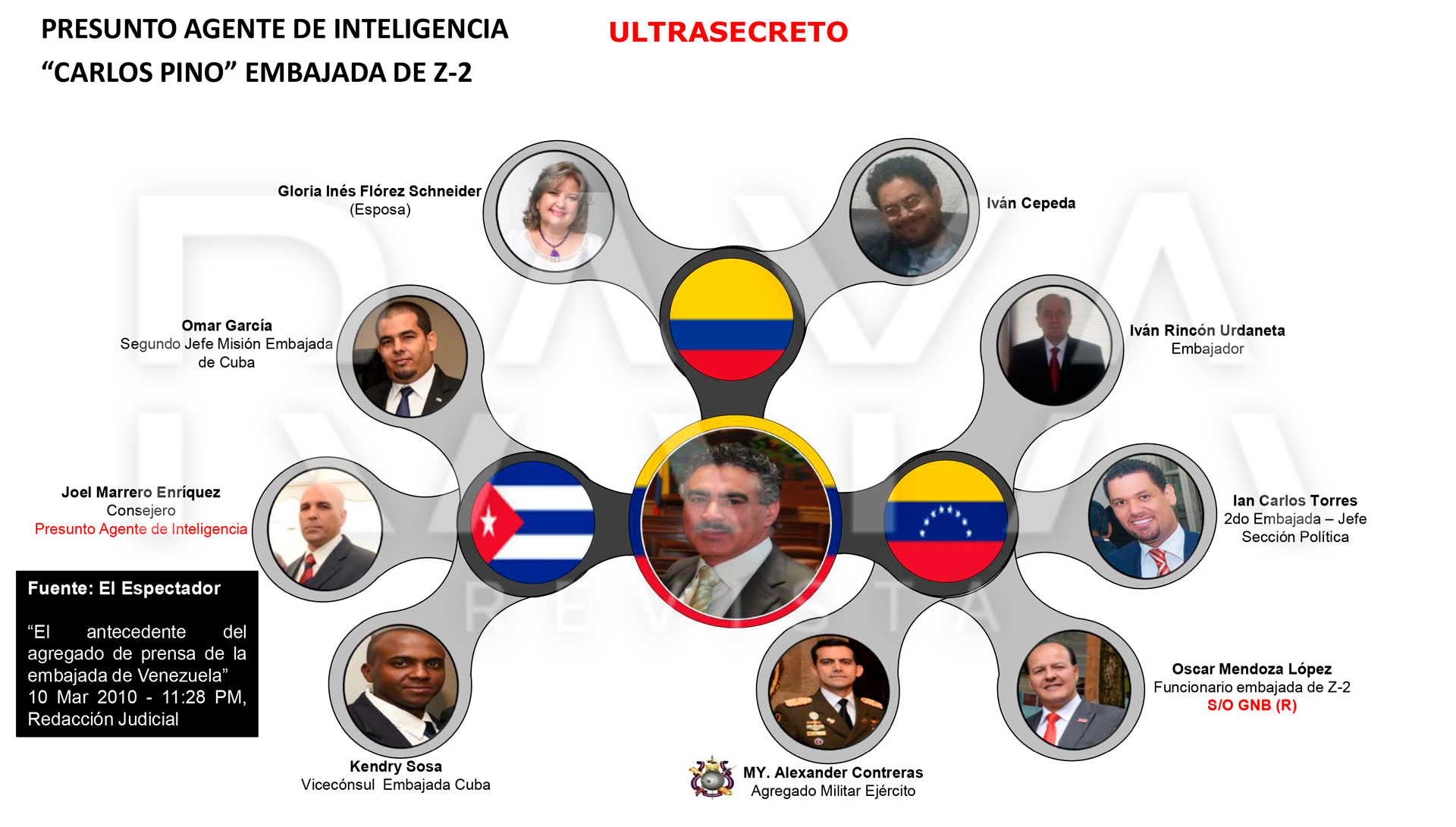
Pino was at a New Year’s Eve party in the Teusaquillo neighborhood of Bogotá when he was arrested by traffic police for having left his truck improperly parked. As he was a Venezuelan citizen, the police called Colombia Immigration, which took him away without giving any further explanation to his family . At that time, Pino was not a diplomat and had resided in Colombia legally for 19 years. “I am the first citizen to be expelled from a country because the truck was parked incorrectly,” Pino told RAYA magazine today from Caracas.
Prosecutor Néstor Humberto Martínez said that his entity had been conducting a criminal investigation against Carlos Pino for more than six months for “activities that threaten national public order” and alleged “legal or illegal monitoring of Venezuelan citizens, as in the case of prosecutor Venezuelan Luisa Ortega. In conversation with this medium, Pino said that the Colombian Prosecutor’s Office certified that there is no ongoing investigation against him.
Even while outside of Colombia, during 2019 Pino continued to be included in the analysis and profiling of Colombian spies, being accused, without evidence, of executing a political and ideological direction from Venezuelan territory.
Operation Ocaso against the consulate of Cartagena
One of the most detailed operations in the espionage documents against Venezuela is the so-called “Operation Ocaso”, which included “Operation Cleopatra” against the consul Ayskel Carolina Torres de García, who was described by the Colombian intelligence as an “informant of the DGCIM” (General Directorate of Military Counterintelligence of Venezuela). In one of the documents of the operation the consul appears in the middle of a synoptic chart that describes a plan to discredit her and recruit her with blackmail. The diagram where the plan appears describes stages of “Siege”, “Emotional Fracture”, “Delegitimization” and “Softening”, these last two with the appellation “O.D.I.O. Operation”.


Consul Ayskel had been followed and profiled since July 2017. On one of those occasions she was photographed together with consulate officials in a restaurant in Bocagrande and on another with a man whom the agents said was her father.
At the beginning of 2018, the consul was again profiled along with social leaders from Cartagena, such as Alberto Bermúdez Roa of the National Movement of Victims of State Crimes (Movice); Daniel Quiroz, coordinator of the Communist Youth of Colombia and Simón Ashook, of the Patriotic March political movement. All these leaders are indicated in the documents to receive ideological direction from the Venezuelan consuls of Cartagena and Bucaramanga.
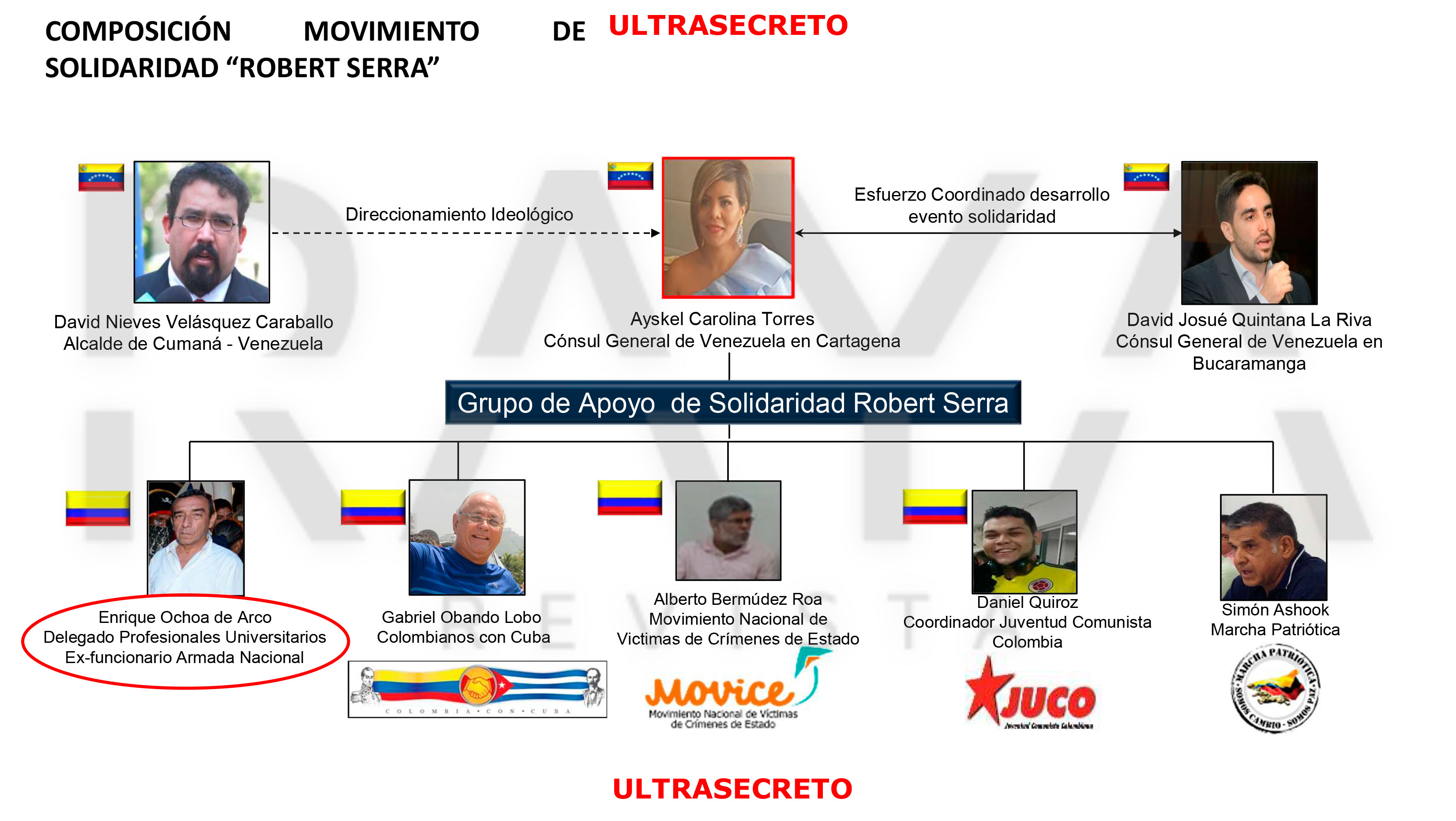
The other operation that took place in Cartagena was the so-called “Eros” whose protagonist was a Venezuelan military attaché, who had been followed and profiled since May 2017. According to intelligence documents, the diplomat was in a romantic relationship with a married man who was a military attaché of a Caribbean country. This information was used by Colombian spies to blackmail and try to force the couple to join their list of cooperators. According to the source that gave this information to RAYA magazine, the Antillean attache succumbed to blackmail but the Venezuelan did not.
The pressure to co-opt the military attaché intensified as of July 3, 2018 when she traveled to Bogotá, where they outlined an apartment for her and followed each of the meetings she had with the Caribbean attaché. On Sunday, July 8, according to the Colombian intelligence timeline, the attache “approached” the Venezuelan, which in spy language means that she proposed to cooperate with the Colombians. The sources of information that delivered the documents to this magazine added that the next day a Colombian spy, using a false identity as a DEA agent and under a false flag operation, approached her to finish persuading her to become an informant. However, according to the timeline and the photographs of her movements, she left Colombia for Caracas under pressure.




















The level of espionage against the military attaché reached such a point that she was followed and profiled from the El Dorado airport in Bogotá to the Simón Bolívar airport in Caracas. Later, her home, located in the municipality of Carrizal, state of Miranda, was also profiled and listed among the objectives that Colombian spies continued to have.
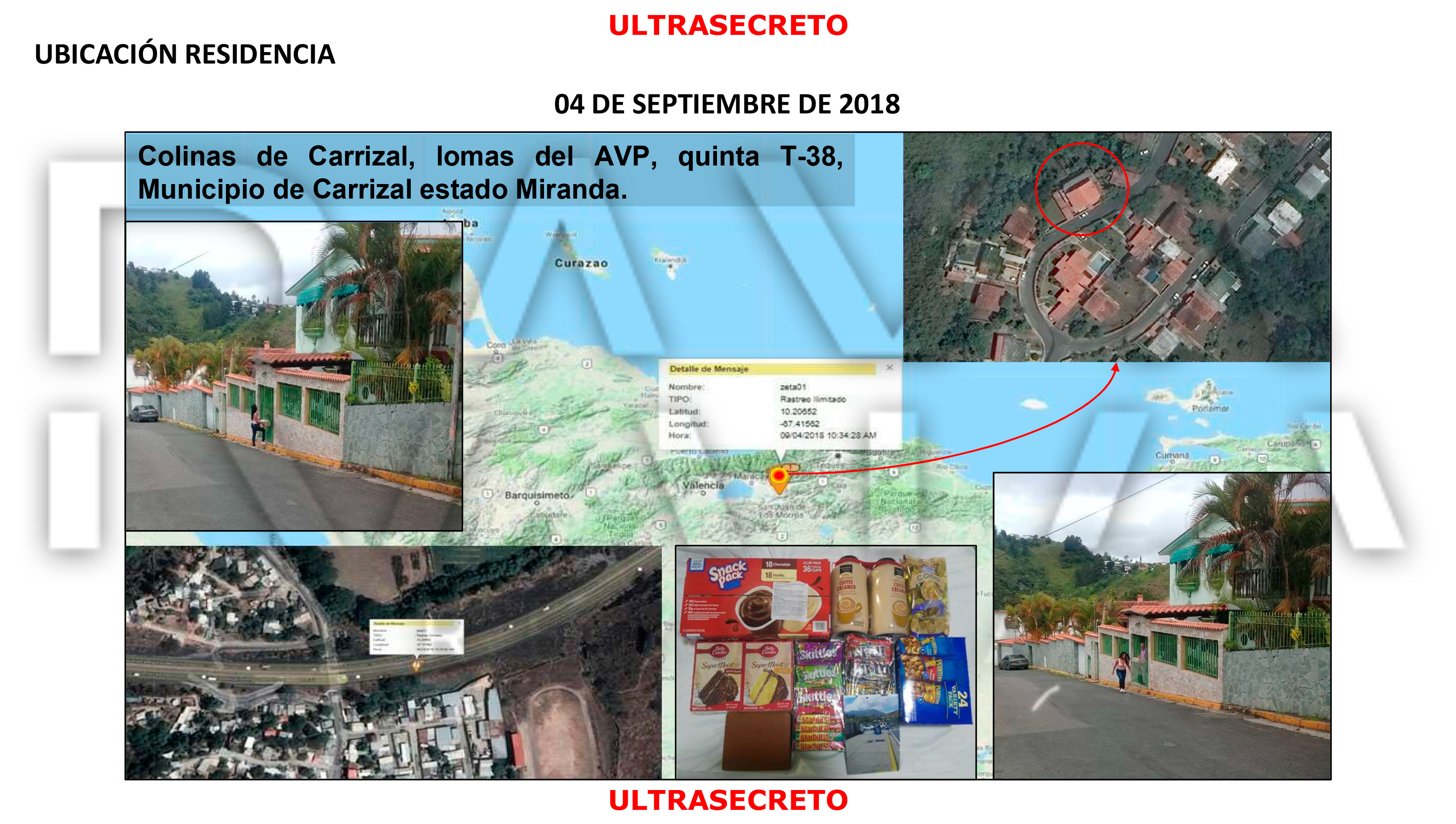
The “Ocaso” operation would end in Cartagena after February 23, 2019, when President Maduro announced the definitive break in relations with Colombia. Two diplomats from the consulate of that city exchanged messages on how to protect the information that rested in the main office, including money and the most sensitive documents that were kept in a safe. The Colombian spies had access to these chats and, days after the departure of the entire Venezuelan diplomatic corps from Colombia, they executed the “Ades” operation. This consisted of obtaining a key to the consulate’s lock to photograph every corner of said office and then accessing the safe to steal documents and money.
Theft of information from the Venezuelan consulate
Theft of information from the Venezuelan consulate
Theft of information from the Venezuelan consulate
*RAYA magazine clearly knows the name of the state force where the intelligence agency that developed the espionage operations operated. However, he refrains from revealing the name for the protection of sources.
*With the collaboration of David Alejandro Guarín Barrero and Isabel Caballero Samper.


One thought on “US-Colombia Espionage: Target Venezuela”